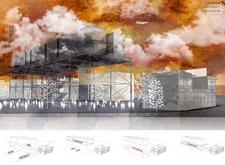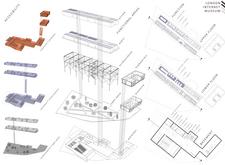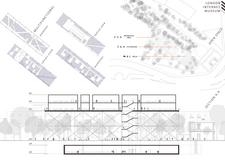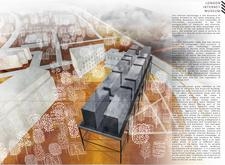5 key facts about this project
## Project Overview
The London Internet Museum is situated in London and is designed to explore the evolution of internet technology and its societal implications. This contemporary structure harmonizes modern design principles with functional requirements, creating a space conducive to education and public interaction while respecting the historical context of its urban environment.
## Spatial Organization
### Functional Layout
The museum's organization categorizes distinct functional zones, enhancing visitor experience and engagement. Exhibition areas are designed to accommodate rotating displays that address various themes related to internet technology, thereby offering flexibility in presentation. Dedicated study and research sections facilitate academic inquiry and collaboration, fostering participatory learning experiences. Public interaction zones are intentionally integrated to host workshops, talks, and community events, while open spaces provide recreational opportunities and manage foot traffic, promoting an interaction between indoor and outdoor environments.
### Multi-Functional Utilization
This design allows for versatile use, supporting events such as fashion shows, concerts, and educational workshops. The spatial arrangement encourages visitor interaction, with open areas creating informal gathering spots that reinforce the museum's community-oriented mission.
## Material Selection and Sustainability
### Material Palette
The chosen materials reflect durability and transparency, contributing to a welcoming atmosphere. Steel provides structural integrity, enabling expansive open exhibition areas. Extensive use of glass maximizes natural light and embodies the museum's open-access ethos. Reinforced concrete serves as a practical backdrop for service areas, while wood finishes in exhibition spaces add warmth and tactility. Landscaping materials, including varied flora and concrete pathways, connect the museum to its public spaces.
### Sustainable Design Practices
Sustainable strategies are integral to the project, incorporating energy-efficient systems and responsibly sourced materials. The design features green roofs and natural landscaping, which not only reduce the building's environmental footprint but also enhance local biodiversity. Advanced technologies, such as interactive displays and augmented reality features, enrich the visitor experience while aligning with the museum's mission to make information accessible and engaging.





















































